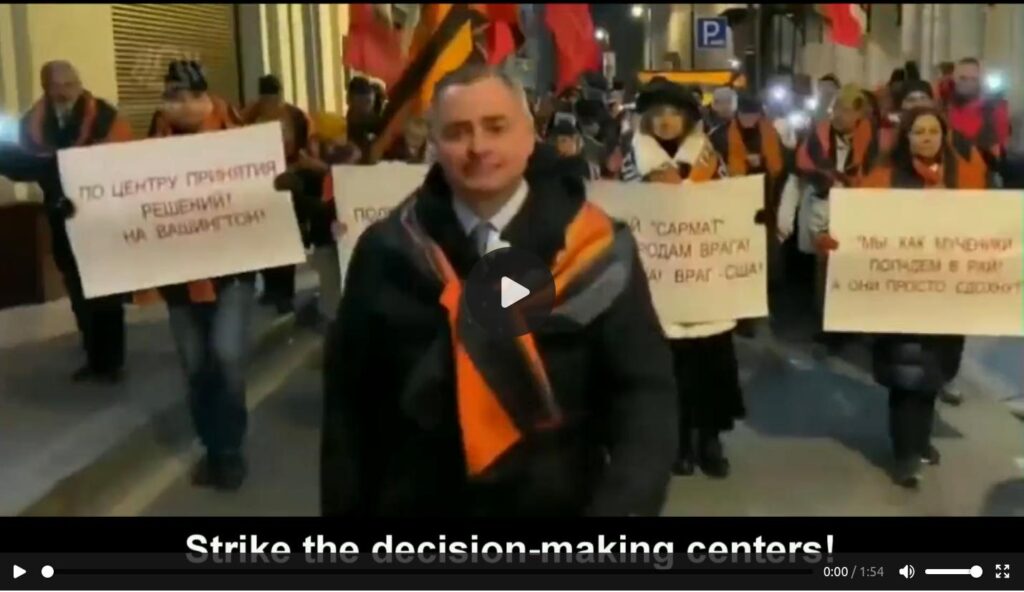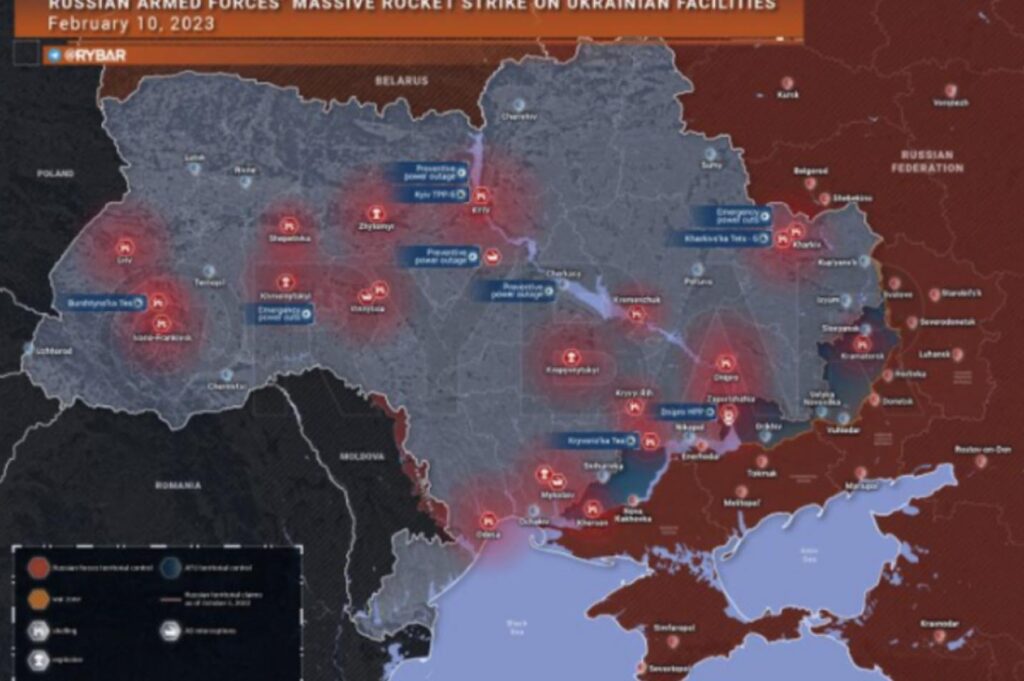I am optimistic.
Do not let the “news” get you down. The death rattle of the United States is loud, and it is flailing about, and it is causing damage… but, you know it won’t be the end of the world. You shouldn’t think so.
It’s going to be a new world, a calmer world; a safer world. And you all will get to see it materialize before your very eyes.
Chicken Karaahi
(Traditional Pakistani Chicken)

Karaahi refers to a utensil resembling the wok.
Ingredients
- 1 kg chicken pieces
- 1/2 kg diced tomatoes
- Garlic paste
- Chopped coriander leaves
- 7 or 8 green chiles
- 5 whole red peppers
- 2 teaspoons salt
- 2 tablespoons oil
Instructions
- Take the chicken pieces and marinade in the garlic paste.
- Heat some oil in a wok (known as “Karaahi”) and add red peppers to brown.
- Add the marinated chicken to the wok. Let the chicken cook on low flame until it becomes slightly tender.
- Add the diced tomatoes mixing them thoroughly with the chicken. Let this cook also on a low flame for 15 minutes and then serve it by garnishing it with green chiles and coriander.
Surprising How China Is Reviving Her Economy In 2023
https://youtu.be/kfKT7fmsCoU
Polish General – Ukraine Near COMPLETE DEFEAT
Polish General Skshipchak said that Ukraine has no forces for an offensive.
The Ukrainian army does not have the means for offensive actions, the situation is close to complete defeat, the former commander of the Polish ground forces, General Waldemar Skshipchak, said in an interview with the portal Wirtualna Polska.
Meanwhile, German Leopard-2 tanks will be in Ukraine at the end of March according to the Minister of Defense Boris Pistorius
Also adding to the potential tank capabilities, Ukrainian crews that arrived in the UK last week will be using Challenger 2 tanks to defend Ukraine next month, UK prime minister Sunak says.
Responding to the supply of tanks by Europe to Ukraine, Russia says it will increase tank production in response to Western arms supplies to Ukraine, according to for Russia President, Dmitry Medvedev.
In related news, the issue of long-range weapons and fighters for Ukraine has been resolved, said the Head of Ukraine’s Presidents office, Yermak.
Poland says it is ready to supply Ukraine with fighter jets, but will not be first among NATO countries.
Earlier this week, Russian President Putin held an operational meeting with members of the Russian Security Council. It was the first time such a meeting has happened at night.
Propaganda in the Ukrainian Proxy-War, w/ Noam Chomsky
"So thankful to the three of you for helping us to really understand the situation."
RALLY IN MOSCOW CHANTING “NUKE WASHINGTON”
Folks in the United States and Europe seem oblivious to how deeply our arming Ukraine to kill Russian soldiers is affecting Russians. Here’s a small glimpse into reality: Video below shows protesters in Moscow tonight walking the streets chanting “Nuke Washington.”
Now, some of you may be thinking “If Russia wasn’t attacking Ukraine, none of this would be happening.” WHat you blithly overlook is what WE in the US and EU did for the prior eight years, that CAUSED Russia to enter Ukraine.
We overthrew the democratically-elected President of Ukraine and installed a puppet regime in Kiev.
We told Ukraine to negotiate the Minsk Agreement without ANY intention of honoring it, simply to “buy time to arm Ukraine for later war with Russia.”
We told Kiev not to negotiate peace with Russia once the conflict started.
We began arming Ukraine with longer range weapons and providing real-time GPS coordinates for Ukraine to target Russians on the battlefields.
Now, I know the mass media hasn’t bothered you with any of these facts while they’ve been propagandizing for Ukraine over the past year, but these ARE the facts.
Things have now gotten so bad, average Russian citizens are marching on the streets telling their government to NUKE us!
Warnings! These food shortages are about to get WORSE
"Kissenger said, "Control the food and you control the people.""
Russia Changing Nuclear Policy to Allow “Preventive” First-Strike – Mentions US Bases in Europe and “Continental United States”
Russia is changing its public nuclear weapons Doctrine as a result of “aggressive” actions by the United States, United Kingdom, NATO et. al. The new policy being developed now, will acknowledge the Untied States as a “Co-Belligerent” in the Ukraine war!
Yesterday, it emerged in British media Ukraine is prepared to use British long-range missiles to strike the annexed peninsula of Crimea.
Ukrainian President Volodymyr Zelensky is pushing for the West to supply jets and longer-range missiles, warning that the war could ‘stagnate’ without them.
British Prime Minister Rishi Sunak has responded to his plea by admitting ‘nothing is off the table’ when it comes to the UK’s supply of military aid to help fight the Russian invasion.
Discussions are understood to have taken place involving the potential provision of Harpoon anti-ship missiles – which have a range of 150 miles and cost around £1.2million.
Storm Shadow surface-to-air cruise missiles, with a range of around 250 miles and cost of £2.2m, are also said to be on the table, The Times (of London) newspaper reports.
Defense sources told the newspaper that Kyiv is prepared to use the missiles to strike Crimea, the peninsula which seceded from Ukraine in 2014 after the West overthrew Ukraine’s democratically-elected President and installed a puppet “pro-west” regime.
Talks are understood to be ongoing as to how many long-range missiles the UK could potentially supply – despite fears that cross-border strikes may lead to an escalation of the conflict.
RUSSIA RESPONSE
On Russian national television earlier this week, it was revealed Russia is headed towards a policy of ‘preventive’ tactical nuclear strikes, similar to what the United States has.
Moreover, if Ukraine targets Crimea and heartland Russia, then Russia will respond according to plans now being laid down.
These plans foresee counter strikes against U.S military installations in Europe and against the Continental United States using hypersonic missiles.
This threat of counter strikes in Europe and the US to is being made public and explicit, so that no one is in doubt about what to expect from the Kremlin.
So here we are. The Russians are stripping away the fiction of a proxy war and revealing the co-belligerent status of the US and its NATO allies in preparation for a kinetic war with NATO.
WORSE
Ukraine’s Legislature, the Verkhovna Rada, is working on Legislation to ALLOW NATO TROOPS INTO UKRAINE!
Sources in Russia say that if Ukraine passes legislation to invite NATO troops into the country, those troops will be immediately engaged and killed by Russian forces.
Sources in the US tell me “That’s what we’re looking for – because all the gloves come off at that point.”
From Vikings to Mars: A Time Traveller Takes Selfies at Different Times and Locations Using a Neural Network

Who wouldn’t want to visit different places and times, meeting some of the most famous people of those eras? Children’s dreams come true with the help of modern neural network technology.
And this redditor, called himself as Stelfie Time Traveller, has done the impossible – with Stable Diffusion, he has teleported himself to different time periods and taken selfies with Nikola Tesla, Charles Darwin, Picasso and many others!




















“The US’s Attempt to Overpower China Has Come to an End”
https://youtu.be/fuN1TpDDIKI
Russia Pounds Ukraine – Fears of “Major Offensive” within Days
Beginning Thursday evening and continuing into Friday morning, Russia absolutely pounded Ukraine with military strikes across vast swaths of the country. City after city reported missile and drone strikes against many targets, primarily critical infrastructure such as electric power plants, sending many, MANY, areas of Ukraine into total darkness, and halting water service in many places as well.
The attacks were so ferocious it lead people to ask where is Ukraine’s air defenses? The response was telling: “Ukraine has almost no ammunition left, it runs out very quickly due to the intensity of the fighting” — was the answer offered by the Office of the President of Ukraine
That response was startling to many, who have been lulled into a false sense of security by mass-media propaganda telling the public that “Ukraine is winning.” As evidenced by the response from the Office of President, it is not; not winning. Not even close. In fact, Ukraine is losing the war so badly, there is no factual basis to believe they have any real chance of prevailing at all.
Months and months of outright fraudulent reporting by mass media inside Ukraine, inside Europe, and inside the United States is about to collide with reality in a way the general public is not prepared for.
During the onslaught, the following reports flooded in:
Explosions reported in the Vinnytsia Oblast, west-central Ukraine.
Explosions reported in Dnipro.
Russian missiles attacking Kharkiv. Local telegram sources report problems with electricity.
Air raid alert goes off in many Ukrainian regions. Air raid alerts were activated in many Ukrainian oblasts and in the city of Kyiv early on Feb. 10. Kharkiv Oblast Governor Oleh Syniehubov confirmed that Russian forces are striking the region.
Explosions have been heard in Zaporizhzhia, Kharkiv, Dnipro
Russia is striking the critical infrastructure of Kharkiv, the mayor of the city, Igor Terekhov.
Video from the engine room of the Krivorozhskaya TPP after arrival.
Arrival at a power station in Zaporizhia:
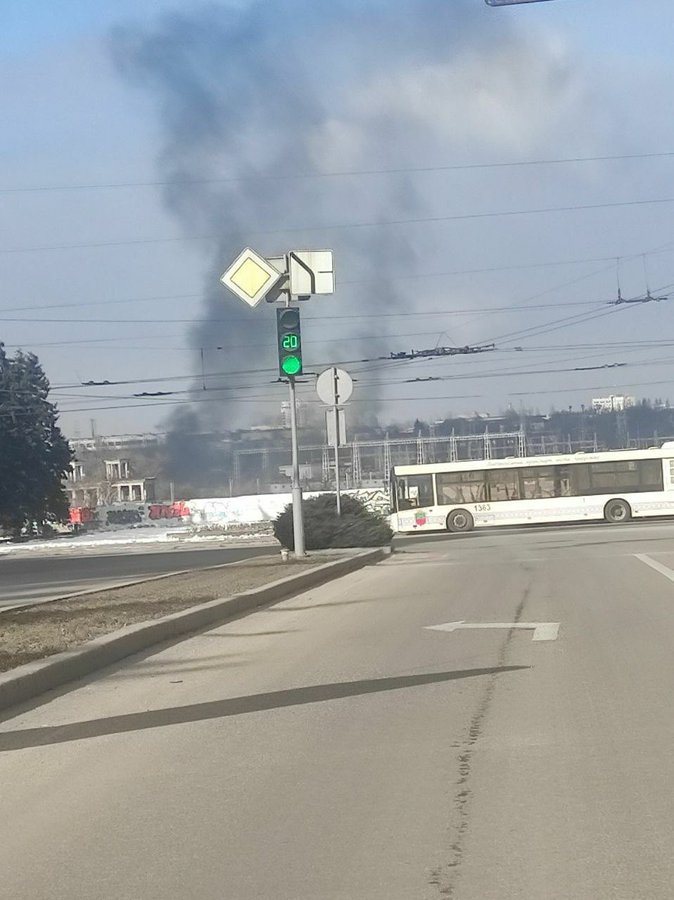
Apocalyptic Bakhmut this morning:
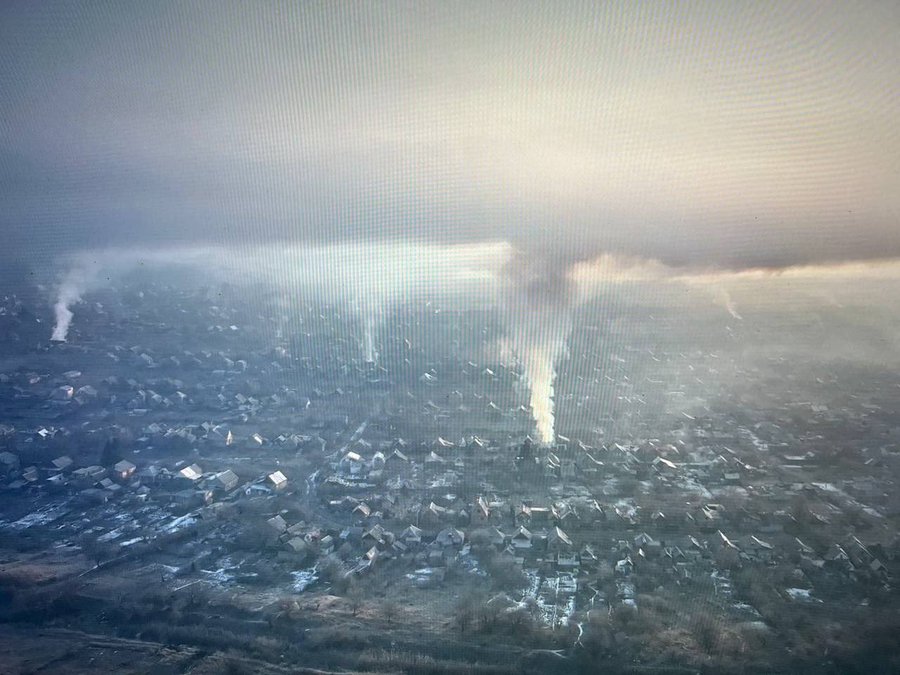
Consequences of missile arrival in Krivoy Rog:
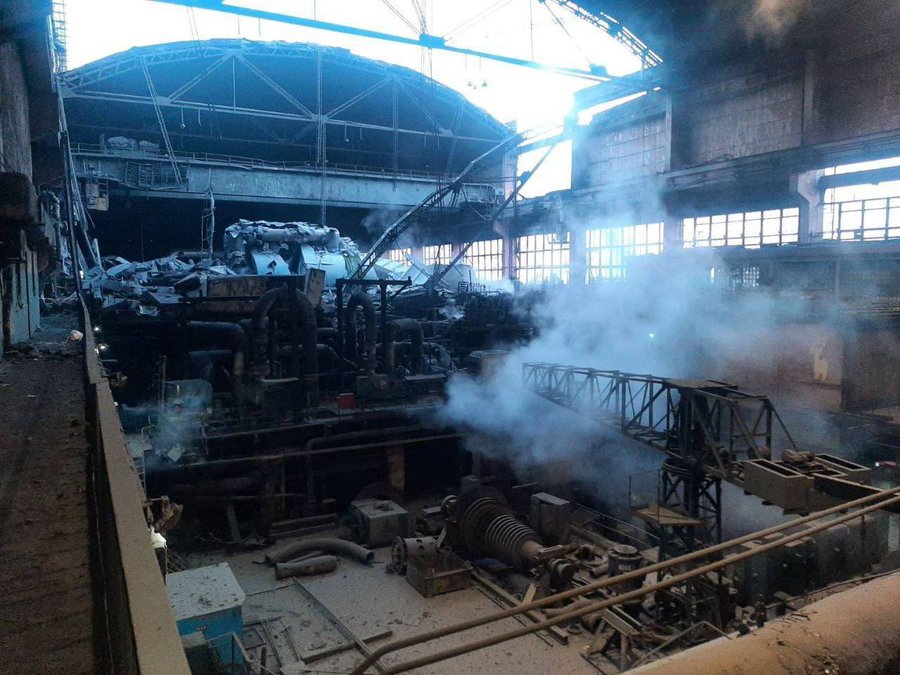
Ladyzhynska CHPP power station in the Vinnitsa region, has reportedly been hit
Kharkov after arrivals a few moments ago. Electricity reportedly lost.
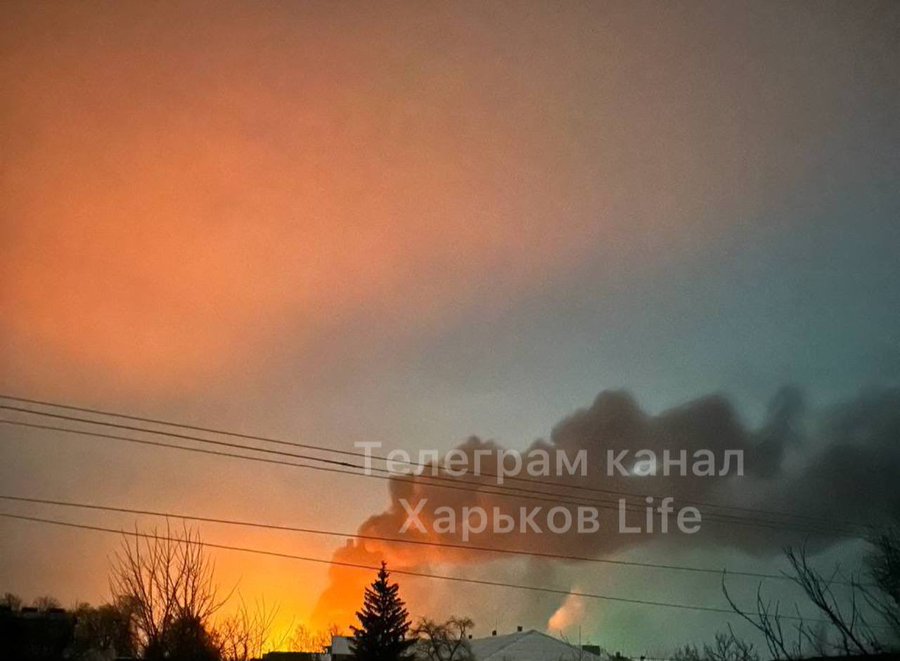
Contact in Kharkiv via telephone: “We’re under heavy shelling, more than 10 explosions and the building is shaking. Oh come on it’s 4am.”
Russian Missiles/Drones are currently targeting Critical Infrastructure in the Eastern Ukrainian City of Kharkiv with multiple Confirmed Strikes already being reported by the Mayor of the City.
The Russian Strategic Net is extremely Active tonight so the Threat of Missile Strikes remains very prevalent.
20+ explosions in #Kharkiv within the last 10 minutes. Mix of S-300 launches and heavy artillery.
Continuous explosions in Zaporizhzhia
5 Tu-95 Strategic Bombers are noted Airborne.
Russian combat aircraft noted over the Azov Sea, at least one Su-30 noted, according to UNIAN on Telegram.
Russian Air Force strategic aviation Morse net active on 8112 Kilohertz CW & 5808 Kilohertz CW, 0400. Ground control sending K Markers. Usually aircraft frequency is 8990 Kilohertz CW. Voice transmitters are still on 4694 Kilohertz USB and 5227 Kilohertz USB.
Russian Air Force strategic aviation voice transmitter has been switched on 9163 Kilohertz USB, 0457 UTC. 4694 Kilohertz USB and 5227 Kilohertz USB transmitters noted turned off.
7 russian strategic bombers are flying from the military airfield Olenia to the launch position in the Caspian Sea area. The total volley is 120 cruise missile. But they never used such amount.
3 russian missile carriers with a total salvo of up to 20 missiles of the “Caliber” type are concentrated in the waters of the Black Sea now – official.
This attack has targeted energy facilities in Kyiv, Kharkov, Lvov, Ivano-Frankivsk, Dnepropetrovsk, Vinnitsa, Khmelnytsky regions. 35 missiles were fired against Kharkiv and Zaporozhye regions alone!
Update. Russian Air Force strategic aviation activity. Transmitters are still switched on for voice nets 8098 Kilohertz USB and 9163 Kilohertz USB as of 1200 UTC. Morse net is still active with ground control sending W Markers as of 1200 UTC.
It is clear from the reporting the Russian offensive was widespread and ferocious.
There were reports of a over a hundred hits in the Sumy Oblast today. That’s north west of Kharkiv. There was no fighting in that area for a long time.
A Major Russian Offensive may now be underway in Eastern Ukraine with Artillery and Missile Strikes that are consistent with Shaping Operations currently taking place in the Kharkiv, Luhansk, Donetsk, and Zaporizhzhia Regions.
According to Regional Officials at least 17 Missile Strikes were reported in the last few hours on Critical Infrastructure including Power Substations in the City of Zaporizhzhia; currently Damages and Casualties are still being assessed.
Kharkiv Regional Officials are also reporting that at least 10 Strikes on Energy Infrastructure with Blackouts now occurring throughout the City.
Due to missile attacks, emergency blackouts have been introduced in Kyiv and Dnipropetrovsk regions, DTEK.
Ukraine Energy Minister: Russian attacks hit power facilities in six regions, emergency shutdowns in many regions
SpaceX has disabled the Starlink Internet service to control Ukraine’s military drones, as their product “was never intended to be used as a weapon”
The Pentagon’s Plans for a Perpetual Three-Front “Long War” Against China and Russia
Lambert here: This post recently surfaced in my feeds. I have to say that the author made a very good call — in 2018 (!).* Kudos to Tom Engelhardt, who’s been in there punching with Tom Dispatch since 2001. * Hence the anachronistic remark about Trump.
By Michael T. Klare, the five-college professor emeritus of peace and world security studies at Hampshire College and a senior visiting fellow at the Arms Control Association. He is the author of 15 books, the latest of which is All Hell Breaking Loose: The Pentagon’s Perspective on Climate Change. He is a founder of the Committee for a Sane U.S.-China Policy. Originally published at Tom Dispatch.
Think of it as the most momentous military planning on Earth right now. Who’s even paying attention, given the eternal changing of the guard at the White House, as well as the latest in tweets, sexual revelations, and investigations of every sort? And yet it increasingly looks as if, thanks to current Pentagon planning, a twenty-first-century version of the Cold War (with dangerous new twists) has begun and hardly anyone has even noticed.
In 2006, when the Department of Defense spelled out its future security role, it saw only one overriding mission: its “Long War” against international terrorism. “With its allies and partners, the United States must be prepared to wage this war in many locations simultaneously and for some years to come,” the Pentagon’s Quadrennial Defense Review explained that year. Twelve years later, the Pentagon has officially announced that that long war is drawing to a close — even though at least seven counterinsurgency conflicts still rage across the Greater Middle East and Africa — and a new long war has begun, a permanent campaign to contain China and Russia in Eurasia.
“Great power competition, not terrorism, has emerged as the central challenge to U.S. security and prosperity,” claimed Pentagon Comptroller David Norquist while releasing the Pentagon’s $686 billion budget request in January. “It is increasingly apparent that China and Russia want to shape a world consistent with their authoritarian values and, in the process, replace the free and open order that has enabled global security and prosperity since World War II.”
Of course, just how committed President Trump is to the preservation of that “free and open order” remains questionable given his determination to scuttle international treaties and ignite a global trade war. Similarly, whether China and Russia truly seek to undermine the existing world order or simply make it less American-centric is a question that deserves close attention, just not today. The reason is simple enough. The screaming headline you should have seen in any paper (but haven’t) is this: the U.S. military has made up its mind about the future. It has committed itself and the nation to a three-front geopolitical struggle to resist Chinese and Russian advances in Asia, Europe, and the Middle East.
Important as this strategic shift may be, you won’t hear about it from the president, a man lacking the attention span necessary for such long-range strategic thinking and one who views Russia’s Vladimir Putin and China’s Xi Jinping as “frenemies” rather than die-hard adversaries. To fully appreciate the momentous changes occurring in U.S. military planning, it’s necessary to take a deep dive into the world of Pentagon scripture: budget documents and the annual “posture statements” of regional commanders already overseeing the implementation of that just-born three-front strategy.
The New Geopolitical Chessboard
This renewed emphasis on China and Russia in U.S. military planning reflects the way top military officials are now reassessing the global strategic equation, a process that began long before Donald Trump entered the White House. Although after 9/11, senior commanders fully embraced the “long war against terror” approach to the world, their enthusiasm for endless counterterror operations leading essentially nowhere in remote and sometimes strategically unimportant places began to wane in recent years as they watched China and Russia modernizing their military forces and using them to intimidate neighbors.
While the long war against terror did fuel a vast, ongoing expansion of the Pentagon’s Special Operations Forces (SOF) — now a secretive army of 70,000 nestled inside the larger military establishment — it provided surprisingly little purpose or real work for the military’s “heavy metal” units: the Army’s tank brigades, the Navy’s carrier battle groups, the Air Force’s bomber squadrons, and so forth. Yes, the Air Force in particular has played a major supporting role in recent operations in Iraq and Syria, but the regular military has largely been sidelined there and elsewhere by lightly equipped SOF forces and drones. Planning for a “real war” against a “peer competitor” (one with forces and weaponry resembling our own) was until recently given far lower priority than the country’s never-ending conflicts across the Greater Middle East and Africa. This alarmed and even angered those in the regular military whose moment, it seems, has now finally arrived.
“Today, we are emerging from a period of strategic atrophy, aware that our competitive military advantage has been eroding,” the Pentagon’s new National Defense Strategy declares. “We are facing increased global disorder, characterized by decline in the long-standing rules-based international order” — a decline officially attributed for the first time not to al-Qaeda and ISIS, but to the aggressive behavior of China and Russia. Iran and North Korea are also identified as major threats, but of a distinctly secondary nature compared to the menace posed by the two great-power competitors.
Unsurprisingly enough, this shift will require not only greater spending on costly, high-tech military hardware but also a redrawing of the global strategic map to favor the regular military. During the long war on terror, geography and boundaries appeared less important, given that terrorist cells seemed capable of operating anyplace where order was breaking down. The U.S. military, convinced that it had to be equally agile, readied itself to deploy (often Special Operations forces) to remote battlefields across the planet, borders be damned.
On the new geopolitical map, however, America faces well-armed adversaries with every intention of protecting their borders, so U.S. forces are now being arrayed along an updated version of an older, more familiar three-front line of confrontation. In Asia, the U.S. and its key allies (South Korea, Japan, the Philippines, and Australia) are to face China across a line extending from the Korean peninsula to the waters of the East and South China Seas and the Indian Ocean. In Europe, the U.S. and its NATO allies will do the same for Russia on a front extending from Scandinavia and the Baltic Republics south to Romania and then east across the Black Sea to the Caucasus. Between these two theaters of contention lies the ever-turbulent Greater Middle East, with the United States and its two crucial allies there, Israel and Saudi Arabia, facing a Russian foothold in Syria and an increasingly assertive Iran, itself drawing closer to China and Russia. From the Pentagon’s perspective, this is to be the defining strategic global map for the foreseeable future. Expect most upcoming major military investments and initiatives to focus on bolstering U.S. naval, air, and ground strength on its side of these lines, as well as on targeting Sino-Russian vulnerabilities across them.
There’s no better way to appreciate the dynamics of this altered strategic outlook than to dip into the annual “posture statements” of the heads of the Pentagon’s “unified combatant commands,” or combined Army/Navy/Air Force/Marine Corps headquarters, covering the territories surrounding China and Russia: Pacific Command (PACOM), with responsibility for all U.S. forces in Asia; European Command (EUCOM), covering U.S. forces from Scandinavia to the Caucasus; and Central Command (CENTCOM), which oversees the Middle East and Central Asia where so many of the country’s counterterror wars are still underway.
The senior commanders of these meta-organizations are the most powerful U.S. officials in their “areas of responsibility” (AORs), exercising far more clout than any American ambassador stationed in the region (and often local heads of state as well). That makes their statements and the shopping lists of weaponry that invariably go with them of real significance for anyone who wants to grasp the Pentagon’s vision of America’s global military future.
The Indo-Pacific Front
Commanding PACOM is Admiral Harry Harris Jr., a long-time naval aviator. In his annual posture statement, delivered to the Senate Armed Services Committee on March 15th, Harris painted a grim picture of America’s strategic position in the Asia-Pacific region. In addition to the dangers posed by a nuclear-armed North Korea, he argued, China was emerging as a formidable threat to America’s vital interests. “The People’s Liberation Army’s rapid evolution into a modern, high-tech fighting force continues to be both impressive and concerning,” he asserted. “PLA capabilities are progressing faster than any other nation in the world, benefitting from robust resourcing and prioritization.”
Most threatening, in his view, is Chinese progress in developing intermediate-range ballistic missiles (IRBMs) and advanced warships. Such missiles, he explained, could strike U.S. bases in Japan or on the island of Guam, while the expanding Chinese navy could challenge the U.S. Navy in seas off China’s coast and someday perhaps America’s command of the western Pacific. “If this [shipbuilding] program continues,” he said, “China will surpass Russia as the world’s second largest navy by 2020, when measured in terms of submarines and frigate-class ships or larger.”
To counter such developments and contain Chinese influence requires, of course, spending yet more taxpayer dollars on advanced weapons systems, especially precision-guided missiles. Admiral Harris called for vastly increasing investment in such weaponry in order to overpower current and future Chinese capabilities and ensure U.S. military dominance of China’s air and sea space. “In order to deter potential adversaries in the Indo-Pacific,” he declared, “we must build a more lethal force by investing in critical capabilities and harnessing innovation.”
His budgetary wish list was impressive. Above all, he spoke with great enthusiasm about new generations of aircraft and missiles — what are called, in Pentagonese, “anti-access/area-denial” systems — capable of striking Chinese IRBM batteries and other weapons systems intended to keep American forces safely away from Chinese territory. He also hinted that he wouldn’t mind having new nuclear-armed missiles for this purpose — missiles, he suggested, that could be launched from ships and planes and so would skirt the Intermediate-Range Nuclear Forces Treaty, to which the U.S. is a signatory and which bans land-based intermediate-range nuclear missiles. (To give you a feel for the arcane language of Pentagon nuclear cognoscenti, here’s how he put it: “We must continue to expand Intermediate Nuclear Force Treaty-compliant theater strike capabilities to effectively counter adversary anti-access/area-denial [A2/AD] capabilities and force preservation tactics.”)
Finally, to further strengthen the U.S. defense line in the region, Harris called for enhanced military ties with various allies and partners, including Japan, South Korea, the Philippines, and Australia. PACOM’s goal, he stated, is to “maintain a network of like-minded allies and partners to cultivate principled security networks, which reinforce the free and open international order.” Ideally, he added, this network will eventually encompass India, further extending the encirclement of China.
The European Theater
A similarly embattled future, even if populated by different actors in a different landscape, was offered by Army General Curtis Scaparrotti, commander of EUCOM, in testimony before the Senate Committee on Armed Services on March 8th. For him, Russia is the other China. As he put it in a bone-chilling description, “Russia seeks to change the international order, fracture NATO, and undermine U.S. leadership in order to protect its regime, reassert dominance over its neighbors, and achieve greater influence around the globe… Russia has demonstrated its willingness and capability to intervene in countries along its periphery and to project power — especially in the Middle East.”
This, needless to say, is not the outlook we’re hearing from President Trump, who has long appeared reluctant to criticize Vladimir Putin or paint Russia as a full-fledged adversary. For American military and intelligence officials, however, Russia unquestionably poses the preeminent threat to U.S. security interests in Europe. It is now being spoken of in a fashion that should bring back memories of the Cold War era. “Our highest strategic priority,” Scaparrotti insisted, “is to deter Russia from engaging in further aggression and exercising malign influence over our allies and partners. [To this end,] we are… updating our operational plans to provide military response options to defend our European allies against Russian aggression.”
The cutting edge of EUCOM’s anti-Russian drive is the European Deterrence Initiative (EDI), a project President Obama initiated in 2014 following the Russian seizure of Crimea. Originally known as the European Reassurance Initiative, the EDI is intended to bolster U.S. and NATO forces deployed in the “front-line states” — Estonia, Latvia, Lithuania, and Poland — facing Russia on NATO’s “Eastern Front.” According to the Pentagon wish list submitted in February, some $6.5 billion are to be allocated to the EDI in 2019. Most of those funds will be used to stockpile munitions in the front-line states, enhance Air Force basing infrastructure, conduct increased joint military exercises with allied forces, and rotate additional U.S.-based forces into the region. In addition, some $200 million will be devoted to a Pentagon “advise, train, and equip” mission in Ukraine.
Like his counterpart in the Pacific theater, General Scaparrotti also turns out to have an expensive wish list of future weaponry, including advanced planes, missiles, and other high-tech weapons that, he claims, will counter modernizing Russian forces. In addition, recognizing Russia’s proficiency in cyberwarfare, he’s calling for a substantial investment in cyber technology and, like Admiral Harris, he cryptically hinted at the need for increased investment in nuclear forces of a sort that might be “usable” on a future European battlefield.
Between East and West: Central Command
Overseeing a startling range of war-on-terror conflicts in the vast, increasingly unstable region stretching from PACOM’s western boundary to EUCOM’s eastern one is the U.S. Central Command. For most of its modern history, CENTCOM has been focused on counterterrorism and the wars in Iraq, Syria, and Afghanistan in particular. Now, however, even as the previous long war continues, the Command is already beginning to position itself for a new Cold War-revisited version of perpetual struggle, a plan — to resurrect a dated term — to contain both China and Russia in the Greater Middle East.
In recent testimony before the Senate Armed Services Committee, CENTCOM commander Army General Joseph Votel concentrated on the status of U.S. operations against ISIS in Syria and against the Taliban in Afghanistan, but he also affirmed that the containment of China and Russia has become an integral part of CENTCOM’s future strategic mission: “The recently published National Defense Strategy rightly identifies the resurgence of great power competition as our principal national security challenge and we see the effects of that competition throughout the region.”
Through its support of the Syrian regime of Bashar al-Assad and its efforts to gain influence with other key actors in the region, Russia, Votel claimed, is playing an increasingly conspicuous role in Centcom’s AOR. China is also seeking to enhance its geopolitical clout both economically and through a small but growing military presence. Of particular concern, Votel asserted, is the Chinese-managed port at Gwadar in Pakistan on the Indian Ocean and a new Chinese base in Djibouti on the Red Sea, across from Yemen and Saudi Arabia. Such facilities, he claimed, contribute to China’s “military posture and force projection” in CENTCOM’s AOR and are signals of a challenging future for the U.S. military.
Under such circumstances, Votel testified, it is incumbent upon CENTCOM to join PACOM and EUCOM in resisting Chinese and Russian assertiveness. “We have to be prepared to address these threats, not just in the areas in which they reside, but the areas in which they have influence.” Without providing any details, he went on to say, “We have developed… very good plans and processes for how we will do that.”
What that means is unclear at best, but despite Donald Trump’s campaign talk about a U.S. withdrawal from Afghanistan, Iraq, and Syria once ISIS and the Taliban are defeated, it seems increasingly clear that the U.S. military is preparing to station its forces in those (and possibly other) countries across CENTCOM’s region of responsibility indefinitely, fighting terrorism, of course, but also ensuring that there will be a permanent U.S. military presence in areas that could see intensifying geopolitical competition among the major powers.
An Invitation to Disaster
In relatively swift fashion, American military leaders have followed up their claim that the U.S. is in a new long war by sketching the outlines of a containment line that would stretch from the Korean Peninsula around Asia across the Middle East into parts of the former Soviet Union in Eastern Europe and finally to the Scandinavian countries. Under their plan, American military forces — reinforced by the armies of trusted allies — should garrison every segment of this line, a grandiose scheme to block hypothetical advances of Chinese and Russian influence that, in its global reach, should stagger the imagination. Much of future history could be shaped by such an outsized effort.
Questions for the future include whether this is either a sound strategic policy or truly sustainable. Attempting to contain China and Russia in such a manner will undoubtedly provoke countermoves, some undoubtedly difficult to resist, including cyber attacks and various kinds of economic warfare. And if you imagined that a war on terror across huge swaths of the planet represented a significant global overreach for a single power, just wait. Maintaining large and heavily-equipped forces on three extended fronts will also prove exceedingly costly and will certainly conflict with domestic spending priorities and possibly provoke a divisive debate over the reinstatement of the draft.
However, the real question — unasked in Washington at the moment — is: Why pursue such a policy in the first place? Are there not other ways to manage the rise of China and Russia’s provocative behavior? What appears particularly worrisome about this three-front strategy is its immense capacity for confrontation, miscalculation, escalation, and finally actual war rather than simply grandiose war planning.
At multiple points along this globe-spanning line — the Baltic Sea, the Black Sea, Syria, the South China Sea, and the East China Sea, to name just a few — forces from the U.S. and China or Russia are already in significant contact, often jostling for position in a potentially hostile manner. At any moment, one of these encounters could provoke a firefight leading to unintended escalation and, in the end, possibly all-out combat. From there, almost anything could happen, even the use of nuclear weapons. Clearly, officials in Washington should be thinking hard before committing Americans to a strategy that will make this increasingly likely and could turn what is still long-war planning into an actual long war with deadly consequences. [Lambert here: Ah well, nevertheless….]
Egyptian Feta Cheese Salad

Ingredients
- 1 large cucumber, peeled, halved lengthwise, seeds removed
- Salt
- 12 ounces feta cheese, drained
- 1/2 cup finely chopped mild onion
- 1/4 cup lemon juice
- 1/4 cup olive oil
- Freshly ground pepper
- Mint sprigs
Instructions
- Score cucumber with tines of fork. Sprinkle with salt and let stand for 20 minutes.
- Crush cheese with fingertips or fork and mix thoroughly with onion, lemon juice and oil. Season with pepper.
- Drain, rinse and slice cucumbers.
- Combine with cheese mixture.
- Place in shallow serving dish and decorate with mint sprigs.
- Chill about 30 minutes before serving.




